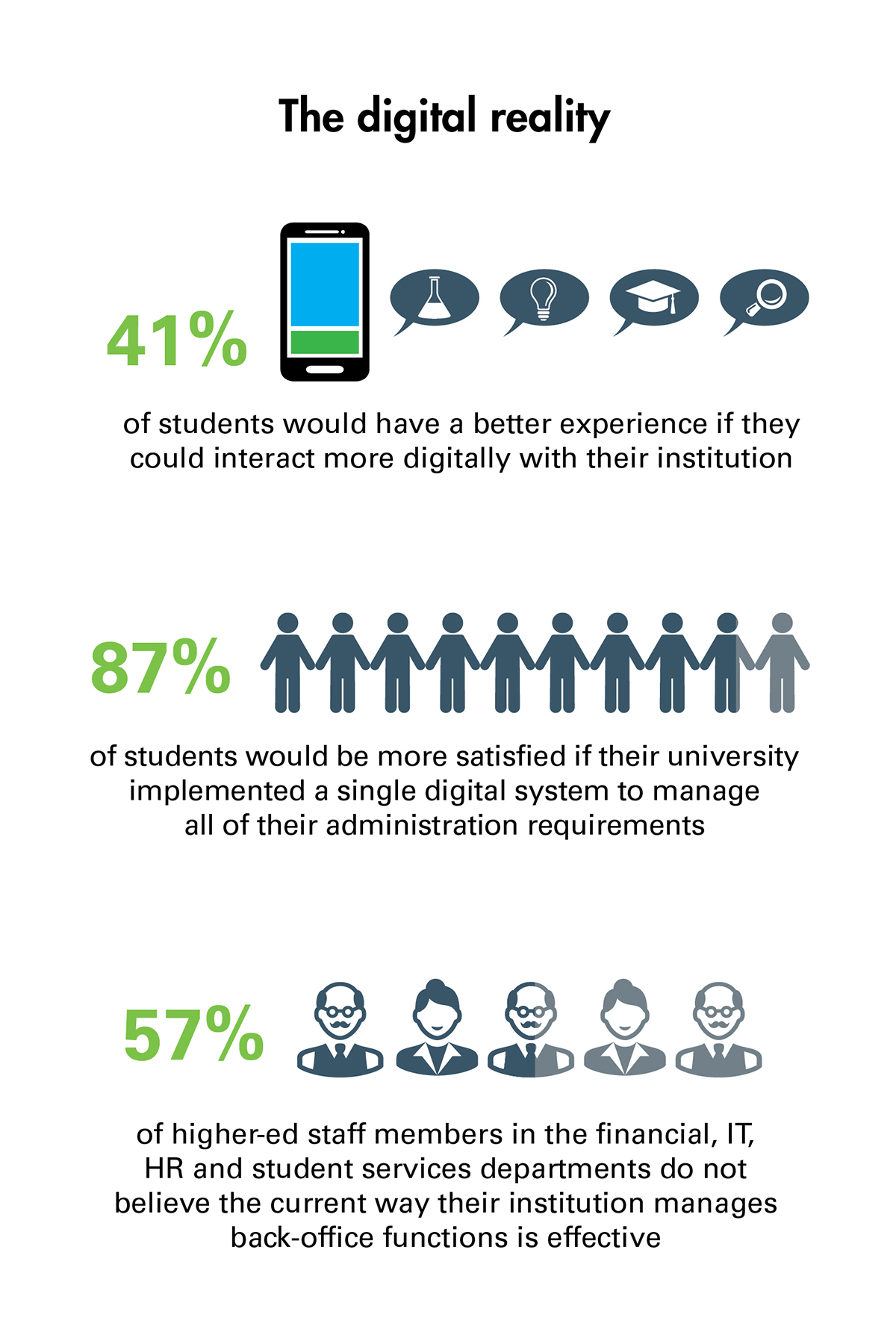Q&A with Austin Laird, Director of Product for Higher Education, and
Elfie Smith, Strategic
Business Architect, Unit4
Why do colleges and universities need to prepare for change in higher ed?
Austin Laird: Recent trends—for example, a drop in high school starters, shifting demands for career education, and growing acceptance of nondegree credentials—indicate that over the next three to five years, we’ll see potentially dramatic changes in the demographics of learners. Then there are statutory reporting requirements and data privacy considerations, as well as the need for more diverse program and course offerings. This all adds up to institutions needing to build an appetite for change and an ability to accommodate new models of delivering education.
Elfie Smith: This is not just a one-time shift in student expectations and requirements, whereby colleges and universities need to make one significant change. There will be many and ongoing changes we can’t yet predict. Some may be small and incremental, but they will add up to create a very different landscape that will require new ways of doing work to deliver an optimal student experience.
What institutional changes should higher ed leaders explore to successfully plan for future challenges and opportunities?
Austin Laird: Leaders need to be flexing and stretching their institutions, both technologically and culturally. They need to standardize business processes and adopt off-the-shelf software to run those processes, so there is more time and money for new initiatives. Using flexible and agile applications will also allow institutions to anticipate and meet future needs.
Elfie Smith: Developing a culture in which business processes can be readily adjusted will ensure that challenges can be addressed promptly and new opportunities can have beneficial outcomes. I have experienced the impact of broad organizational change-management training and support for employee development, and these actions went a long way toward enabling employees to not only cope with change, but also thrive given the opportunity to reenvision their work.
How can institutions empower themselves to anticipate change and deliver experiences that meet the needs of the ever-evolving student?
Austin Laird: Institutions need to create a People Experience in which administrative redundancy is eliminated and automation is leveraged so people have more time to evolve, innovate, and even reinvent what their institutions do and how they do it. Empowered by technology and modern enterprise systems, they can take time to consider how to support new business models, new learning models and new student markets.
“Institutions need to create a People Experience in which administrative redundancy is eliminated and automation is leveraged so people have more time to evolve, innovate, and even reinvent what their institutions do and how they do it.”
Elfie Smith: Institutions can support their people by encouraging them to proactively identify new requirements and respond to them quickly. Employees who focus on meaningful, creative work will be more engaged and able to deliver exceptional services to students.
What technology solutions can help institutions drive sustainability and growth to fully prepare for change and future opportunities?
Austin Laird: Implementing technology solutions makes sense when doing so makes life easier and promotes an improved experience for students and other constituents. We have a planning and budgeting tool that embeds machine learning to find anomalies in budgeting from year to year—to catch problems that may have been missed or taken time to track down. Modern  ERP and student systems are adopting these sorts of technologies, so as institutions move to modern applications, they will see the benefits. The nice thing about building modern solutions on modern platforms is that as technologies and requirements change, functionality can be brought incrementally into the application stack as it makes sense, instead of by the big-bang implementations we all dread.
ERP and student systems are adopting these sorts of technologies, so as institutions move to modern applications, they will see the benefits. The nice thing about building modern solutions on modern platforms is that as technologies and requirements change, functionality can be brought incrementally into the application stack as it makes sense, instead of by the big-bang implementations we all dread.
Elfie Smith: Adaptable solutions that support automation achieve a dual benefit: They allow employees to focus on more complex student situations that require creativity, empathy and judgment, and they ensure that students only seek personal assistance for more complex challenges, rather than simple transactions that are handled by system-supported processes.
For more information, please visit unit4.com/cp/ub






